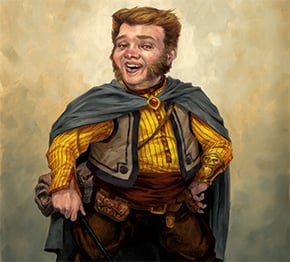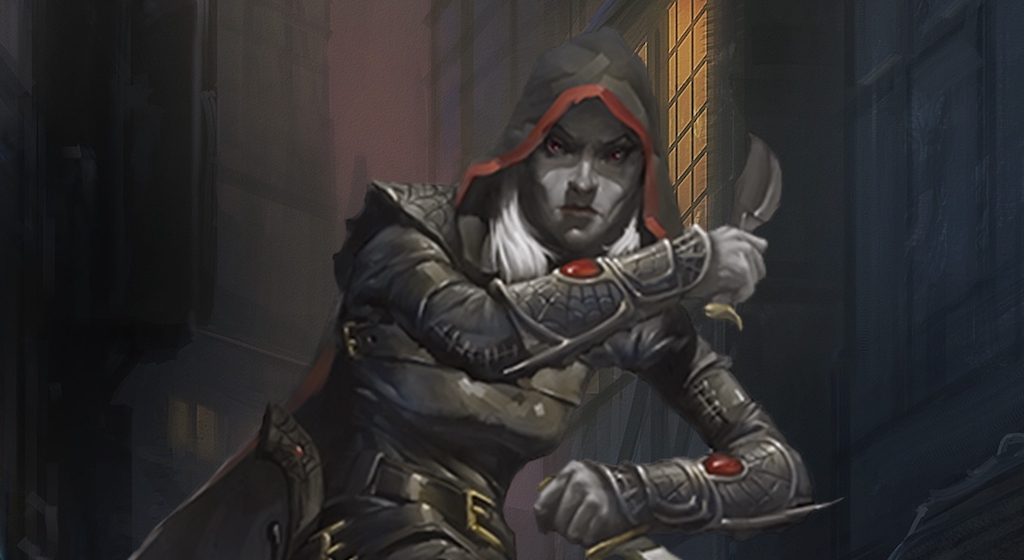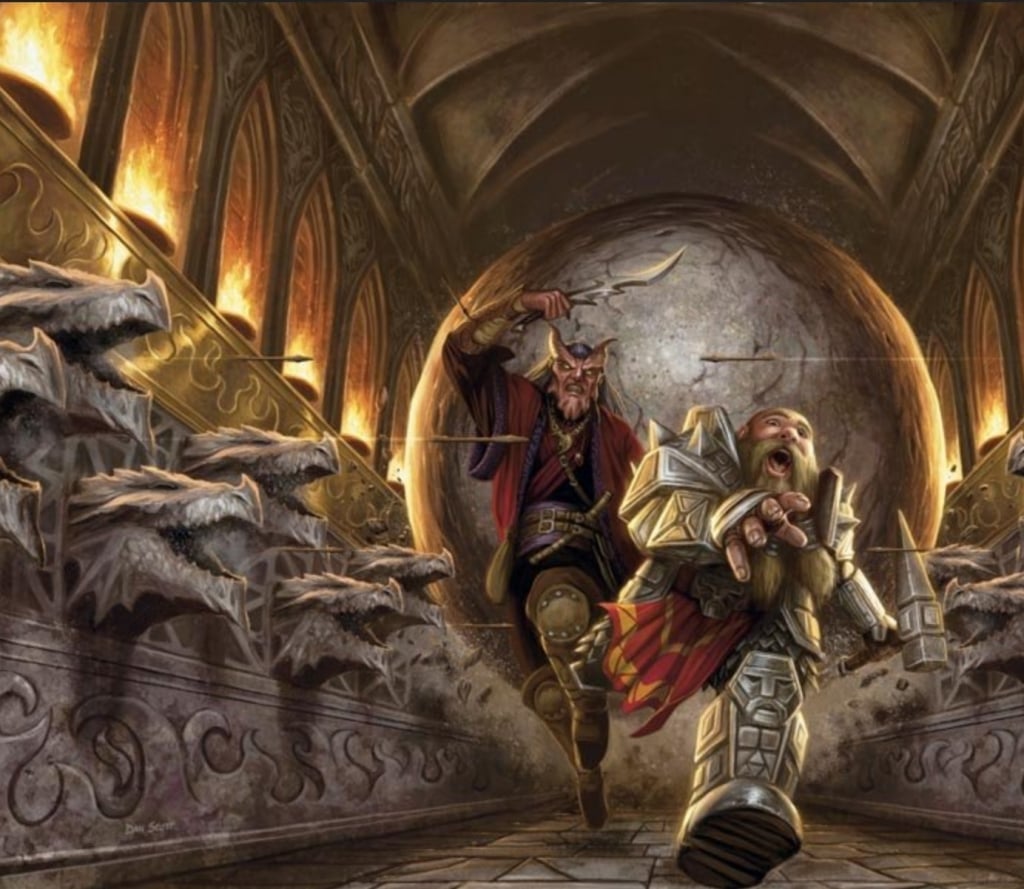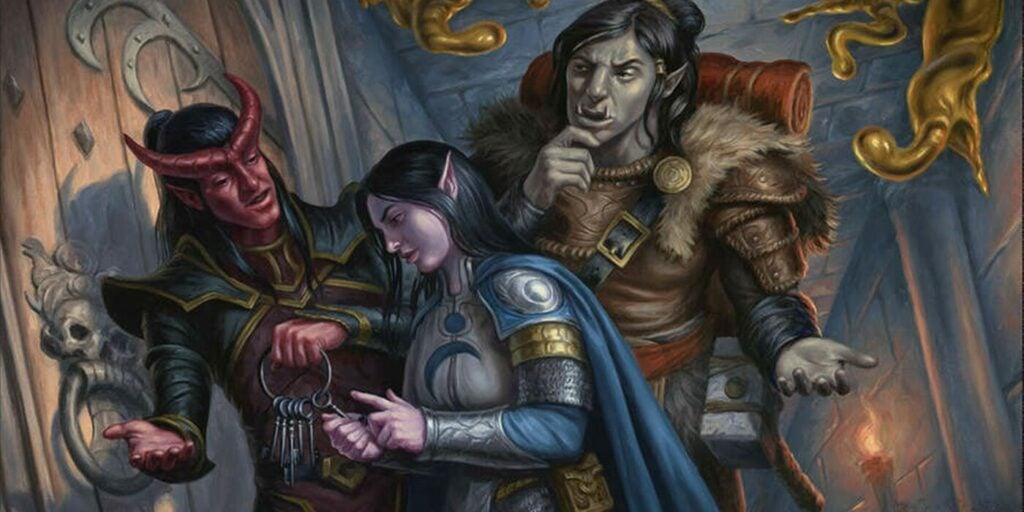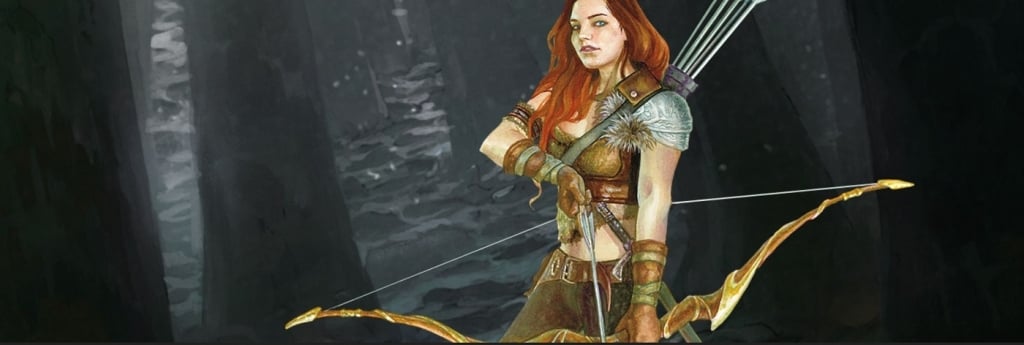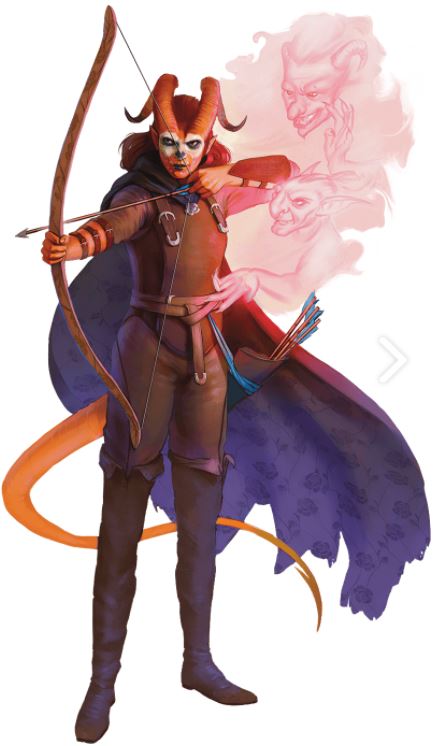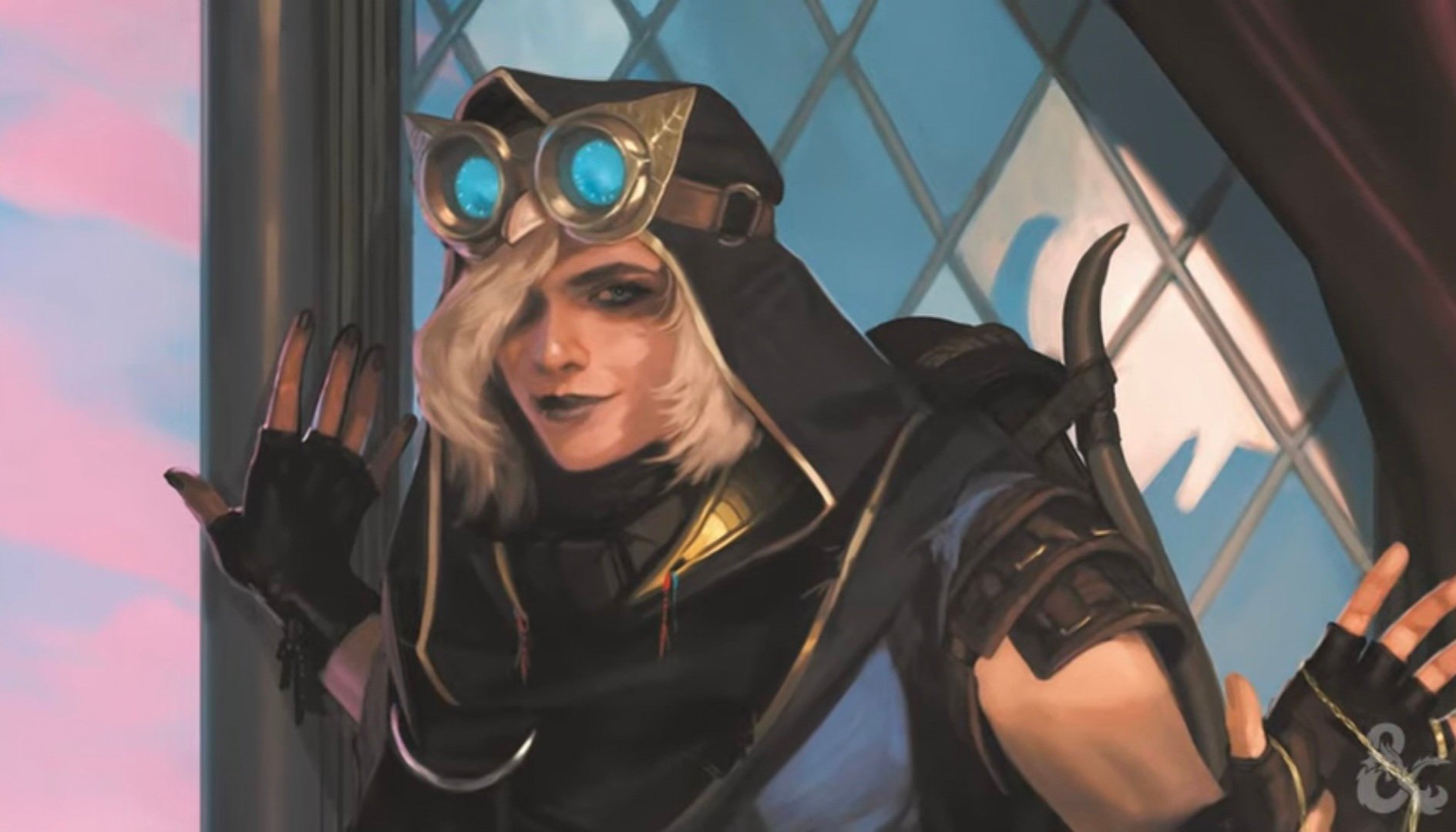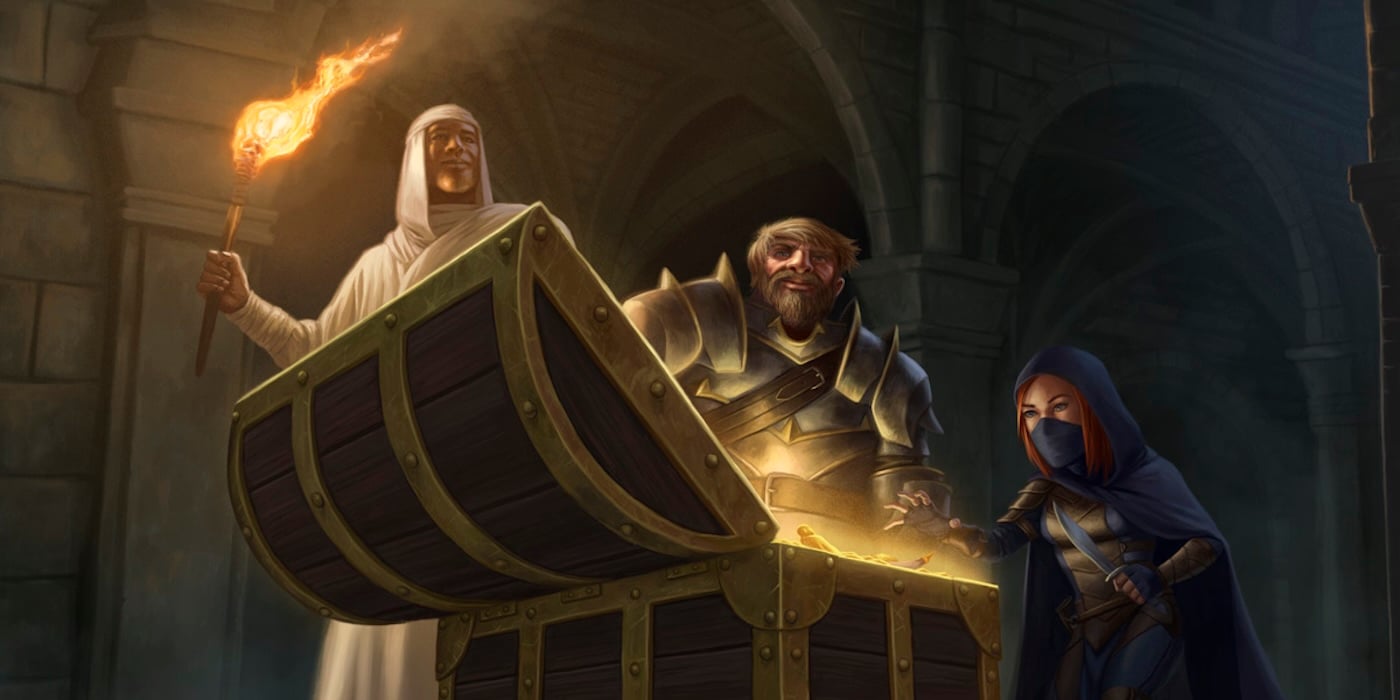D&D 5e Guide – How to Play a Rogue
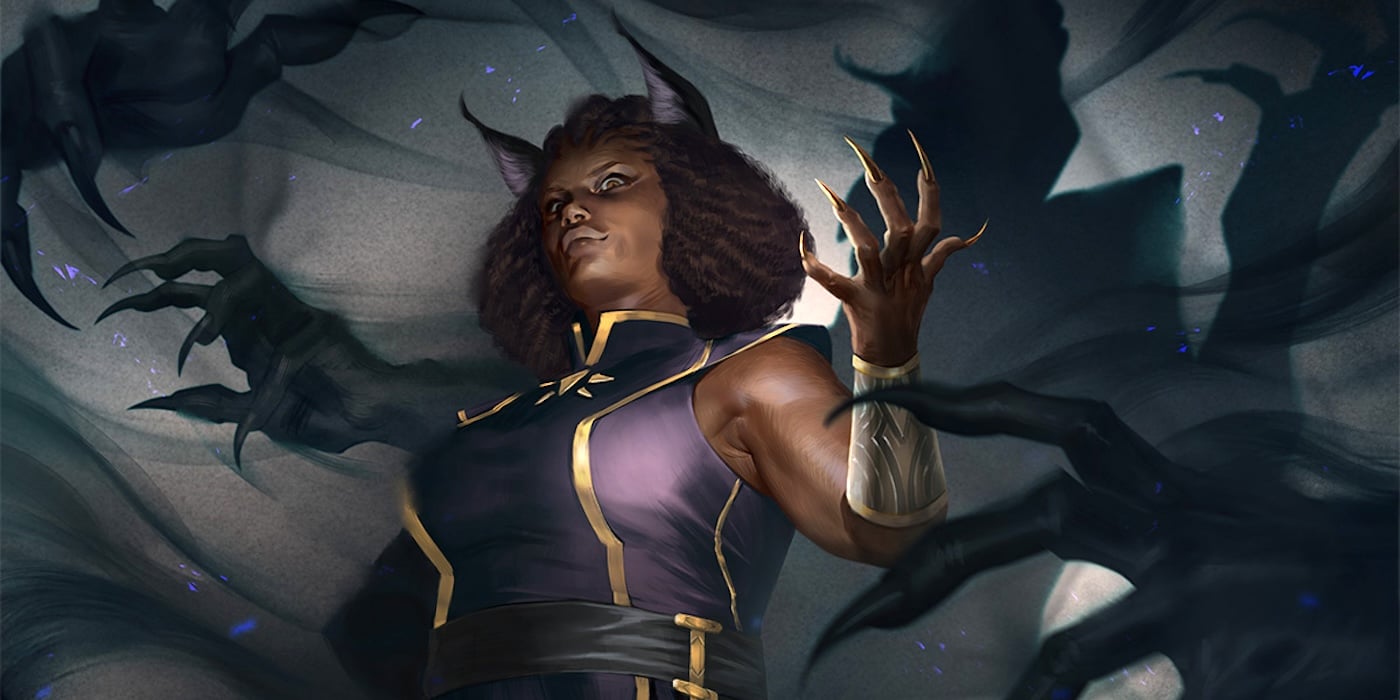
Rogues in 5E are a classic adventuring archetype. Stealthy and skilled, they can be fun; this handy guide will help you get started with a rogue.
If you break down D&D’s adventuring archetypes to their most basic elements, you’ll come away with three main archetypes: Fighter, Magic-User, and Thief. Funnily enough, that’s not too far from how it was in the Original D&D, with Fighting-Man, Magic-User, and Cleric–but Clerics are more like Fighter/Mages (who use divine magic, but magic nonetheless). Thieves weren’t added until the first Greyhawk expansion, and when they were added, they were all about doing things in the dungeon.
Opening locked doors, looking for traps, prowling silently–thieves could do it all. And in 5th Edition, rogues have grown beyond these humble origins. Rogues are typically good at using their skills and dealing one really strong hit. The rest is details, but we’re here to help you figure out what details you want best.
Jump to…
Rogues’ Tools
The Rogue in 5E fits into a variety of roles, but there are two big tools you’ve got in your arsenal. The first of these is Sneak Attack. Sneak attack is an ability that lets you add extra damage to a successful attack if one of the following statements is true:
- You have advantage on your attack roll
- You have an ally within 5 feet of your target, and you don’t have disadvantage on your attack roll
Barring a few subclass options, that’s it. You can only add this extra damage once per turn, which is an important distinction. If you have a spell such as Haste, you can use your hasted action to attack, dealing your sneak attack damage. Then, you can use your normal action to ready an attack against your foe, allowing you to use your reaction to make an attack once it’s not your turn–thus, you can get two sneak attacks in one round.
You’ll need to because Sneak Attack is really your best attack tool. If you can’t pull it off, your damage will quickly fall behind the rest of the party–but that’s okay because as a rogue, you’ll have a few other tools.
Expertise is the other big thing you’re good at. This ability lets you double your proficiency modifier when using skills that you select, which means you’ll be more likely to succeed, even at very difficult tasks. It can be a good idea to check with your DM to see what skills are likely to come up, but in general, Stealth and Perception are almost always good options, and Persuasion or Deception is a good bet, too, if you plan on doing any kind of talking in your party.
Finally, you’ve got a surprising amount of mobility with your Cunning Action. This is where Rogues really shine–they can disappear into shadows or dash across a battlefield faster than almost everyone, except for monks. And the best part is, every rogue has all of these options. Once you get to your subclass you can really customize your play style.
Rogue Subclasses
Arcane Tricksters are a classic combo. This subclass is all about utility. You’ll blend magic with your Rogue’s skills. You’ll also be able to use spells like Mage Hand to pickpockets or disarm traps at range. And with your illusion and enchantment spells, you’ll have plenty more than just sneak attack to do in fights if you can get the right spells to distract or disarm enemies.
Assassins take the single target damage of the Rogue and ultra-specialize in it. The ability to generate automatic critical hits is important for sneak attackers. You can also perform a death strike, so you’ll be good at killing your opponents one at a time. This one can take a little bit of work to get right, so talk to your DM before selecting it. The assassination ability is very strong, but it’s also very situational. So you might want to make sure you’ll have the chance to pull it off first.
Inquisitives combine a rogue’s love of having the right skills (in this case with a focus on learning secrets) for the right job. Of course, a good inquisitive can also make sure their sneak attacks hit harder. Meanwhile, they’re still fairly reliable in terms of seeing it land.
Masterminds can manipulate, disguise, and spy on your enemies. But they’re also surprisingly good at supporting the party. Master of Tactics and Misdirection are great tools in the middle of a fight. And outside of combat, they are great at making friends.
Phantoms are Rogues that have been touched by the power of death. They command spectral magics in order to deal extra damage. This is an odd rogue, but it’s probably one of my favorites. You’ll be dealing damage a fair amount, but will also have grave powers that make you useful when exploring.
Scouts are masters of mobility. Cunning action has nothing on the positioning aspects of a Scout. Abilities like Skirnisher and Superior Mobility can ensure you’re where you need to be. You can use your abilities to keep enemies close or far away while you whittle them down with ranged attacks. And while you don’t gain a combat trick until 13th level, both 13th and 17th have some great abilities on offer. Who doesn’t want to use Sneak Attack twice in a round?
Soulknife Rogues are another unusual choice–they use the power of their mind to manifest blades of psionic energy. If you want to play an invisible rogue who can deal extra damage, then this is the class for you.
Swashbucklers are perfect for being the most stylish, charming, charismatic brawler you can be. You’ll be great at holding an enemy’s attention, with special abilities like Fancy Footwork helping to keep you alive. Meanwhile, abilities like Rakish Audacity and Master Duelist help you to punch well above your weight.
Thief of course, is the classic archetype. With abilities that let them do all the normal rogue stuff, but like, turned up to 11. You can thief harder, better, faster, and stronger than the others. You’ll have one of the widest varieties of bonus actions out there as well. Access everything from trap-finding, to lockpicking, to straight-up taking two turns in a row.
How to Play a Rogue In D&D 5.5E – Subtle, Supple, and Surprisingly Potent
Rogues in D&D 5.5E fulfill much the same role in the party as they did before. They are still all about using skills—and are one of the best character classes for being skilled at a lot of things (alongside the Bard). But, Rogues are also about using weapons to deliver damage. In 5E they could spread things around, but in 5.5E, Rogues are much more focused on taking down a single opponent with powerful strikes.
To that end, Rogues have a number of new things going for them. Starting with the one thing most weapon-using classes get: weapon masteries. A Rogue’s weapon masteries can apply to any of the weapons with which they’re proficient. This means you can get Vex (which can give you advantage, a great way to ensure that you’re always dealing Sneak Attack damage), Nick for two weapon attacks that don’t eat up your precious Bonus Action, Slow to keep folks at bay, and so on. But Vex and Nick are probably going to be among your mainstays. The good news is, because you can swap out your weapon masteries after any long rest, you can experiment with different styles to see what suits your character.
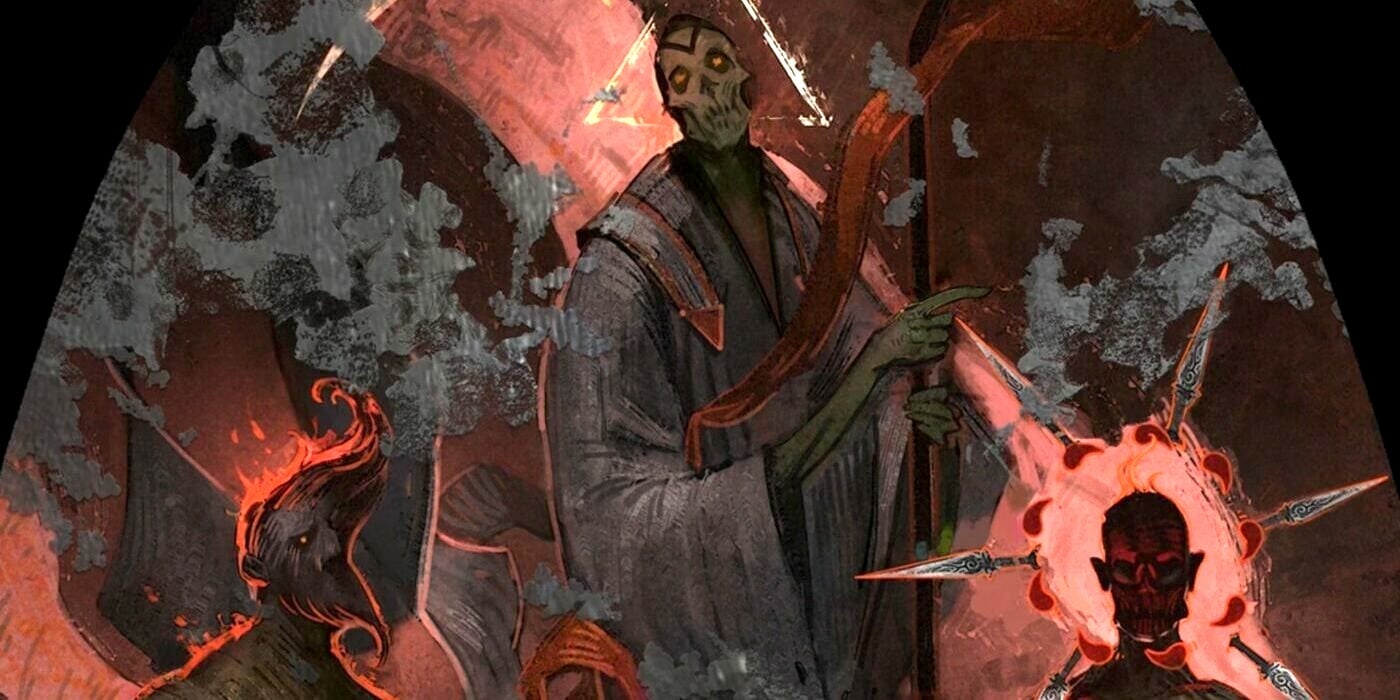
Another thing that Rogues have going for them is a strengthened Sneak Attack. Now Rogues get an ability at level 5 called Cunning Strike. This lets you trade in sneak attack damage dice (which at 5th level starts at 3d6) in exchange for effects. At 5th level you have three options: Posion, Trip, and Withdraw.
Poison, as the name suggests, gives the target the Poisoned condition, making them attack and make skill checks at Disadvantage. Trip, on the other hand, is like the Topple Weapon mastery; your target makes a save or falls prone. Withdraw, on the other hand lets you move up to half your Speed without provoking attacks of opportunity. This is a potent option, especially considering the way that spells like Spirit Guardians or other damaging emanations work.
Each subclass dabbles in their own Cunning Strike options, usually coming online around level 9, and at higher levels you can do more, either potentially knocking a tagrte out, dazing them for their turn, or blinding them for their turn. It’s a fun option for Rogues to play with.
Now More Than Ever Rogues Love Reaction Attacks
One of the biggest tools in any Rogue’s arsenal in 5.5E is going to be the ability to attack when it’s not their turn. There are a few ways this happens. The most typical one is with an attack of opportunity. The other most common way to get a Reaction attack is with a Readied Action. You can take the Ready action on your turn to wait for a “perceivable circumstance” like “when the enemy moves, or makes an attack”. You can then Ready to attack an enemy when it’s not your turn.
Typically, you’d pair this with an ability that lets you make an attack as a Bonus Action. One example of these kinds of abilities is the War Domain Cleric’s Channel Divinity power, which lets you make a single attack as a Bonus Action. You’ll deal Sneak Attack on your turn, use your Action to Ready, and then attack again off turn, potentially dealing sneak attack damage twice in one round.
Finally, you can pick up abilities that let you make an attack as a Reaction. Something like the Battlemaster Fighter’s Riposte maneuver, for instance, lets you make a Reaction attack whenever someone misses you in melee. Either way, you can use Sneak Attack (and therefore Cunning Strike) multiple times per round. Which means that if you’re a War Domain Cleric and also Rogue, for instance, you can dash around the battlefield a few times per round, potentially subjecting opponents to Spirit Guardians many times. But even if you don’t multiclass, that still gives you plenty of mobility options.
5.5E Subclasses – Rogues Running Rampant
There are four subclasses for Rogues (for now) in 5.5E. The Soul Knife, which plays much as it does in Tasha’s Cauldron of Everything.
The Arcane Trickster on the other hand, benefits from 5.5E’s more potent spellcasting rules. There are more tools of the trade accessible to you. Arcane Tricksters especially enjoy the clearer rules around how Illusions work. It’s no longer sort of up to the DM to decide if your Illusions are amazing or completely worthless. This is probably the most flexible of all Rogue subclasses.
The Assassin subclass, is still all about hitting targets hard and especially in the first round of combat. But they no longer rely on Surprise to carry out their deadly strikes. They do rely on going first, so you might want to pair this with something like the Alert feat to make sure you get to do all your cool stuff.
Finally the Thief is probably going to be the sleeper hit of this edition. They have always been fun. But now their ability to use a magic item that needs the Magic Action as a Bonus Action can help them get around some of 5.5E’s weird rules about spellcasting. For instance, you can only cast one spell with a spell slot per turn. But if you cast from a magic item, say, a scroll, you don’t use a Spell Slot. So the Baldur’s Gate 3 trick of being a Rogue with a single level in Wizard or whatever, is actually valid and a great way to play on the tabletop.
Happy adventuring!


